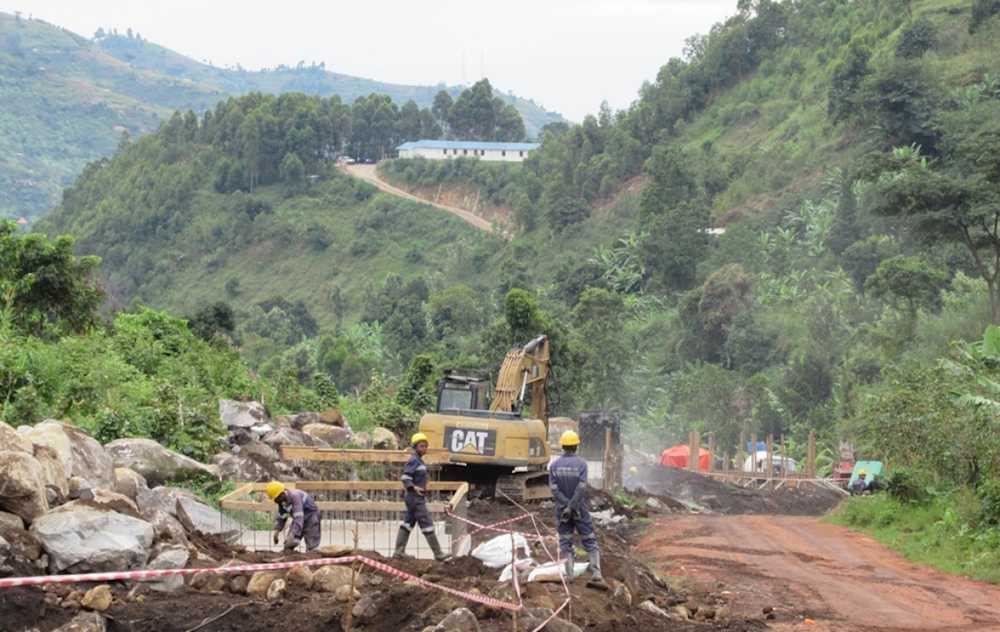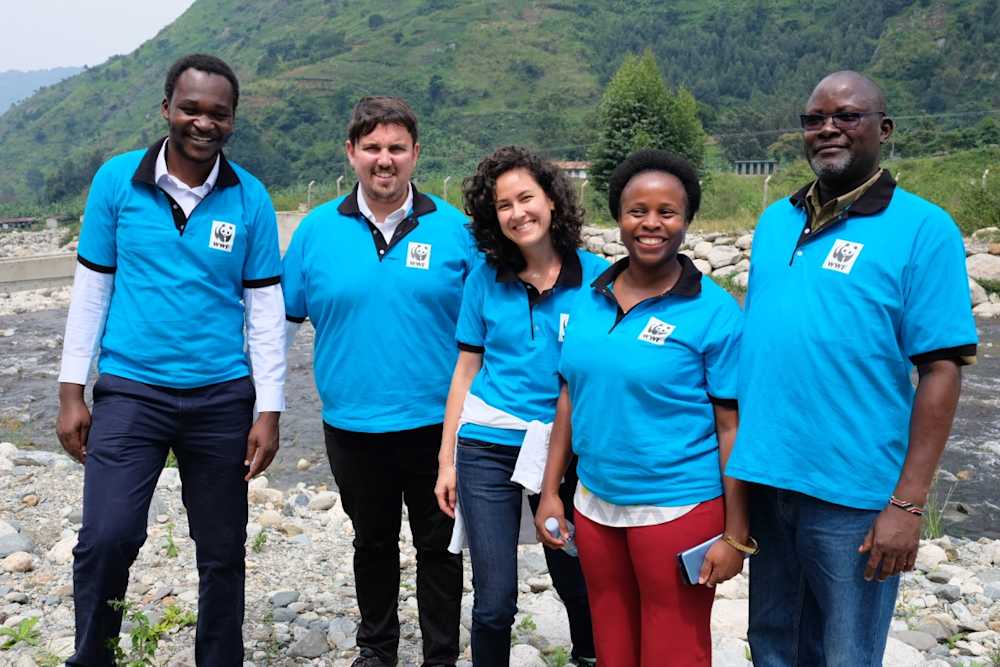Climate Finance
Graduation year for responsAbility Renewable Energy Holding
There are years that truly make a difference: 2019 was such a year for responsAbility Renewable Energy Holding (rAREH), the responsAbility-managed Nairobi-based energy company that fights energy poverty in Sub-Saharan Africa by financing, developing, owning and operating small-scale renewable power plants. Following a strenuous start-up phase rAREH went operational with stakes in no less than six plants and received a vote of confidence from investors that took the company’s AuM to USD 120 m. rAREH Managing Director Joseph Nganga explains what it took to graduate into a new league.

responsAbility Renewable Energy Holding and your Nairobi-based team has recently received a major vote of confidence from its shareholders. Can you explain?
Following a 65% increase in assets provided by all of our existing shareholders, rAREH has just hit USD 120 m in current invested capital. Crossing the significant USD 100 m threshold is an important milestone for our type of business: It proves that we have achieved scale and gotten past the very precarious start-up phase. We are now an established business that continues to build, own and now: even operate power plants.
“We are now an established business that continues to build, own and now: even operate power plants.”
Joseph Nganga, Managing Director, responsAbility Renewable Energy Holding
Between December 2018 and July 2019, you have added six operational power plants to the rAREH portfolio. How did you manage that?
Rwaza I was our first hydropower project to become operational after a two-year construction phase. Through acquisitions, we managed to add stakes in three small-scale hydropower plants in South-African and two in Uganda to our portfolio. At the moment, we have two additional plants under construction and a 265 MW pipeline under development.
Mpanga in Western Uganda is one of the small-scale run-of-the-river hydropower plants currently operated by responsAbility Renewable Energy Holding (rAREH)

Developing power plants in Africa brings with it a special set of challenges. What are they and how did you overcome them?
Our industry has certain peculiarities that require significant capital to get to scale. This includes very long development timelines, very challenging permit and approval processes, very difficult land acquisition processes and a challenging environment to find the right talent. To be able to bring all of that together, getting the business past a really risky phase to a level where there’s adequate capital, adequate pipeline and assets that are generating power is a major achievement.
I am also very proud of the fact that we have actually started construction on a new site. As anybody in the industry will know, this is a huge milestone, as it takes many years and crossing a lot of hurdles to get to construction.
“Our industry has certain peculiarities that require significant capital to get to scale.”
Joseph Nganga
What are the crucial factors behind this success?
The greatest thing to be proud of is the team. We have a wonderful team that ranges from experts with significant experience to relatively young professionals. A significant portion of these young talents are African. By working in this combination, we are developing the skills on the continent which will continue to help build the renewable energy industry in Africa.

rAREH covers the entire value chain of developing, financing, owning and operating small-scale renewable energy plants. What are the specific challenges in every phase of this process?
The first challenge is to identify the right site for an investment. The nature of the continent is that we do not have adequate data to make a business case, whether it is on hydrology – for hydropower – or on insolation for solar power. That is the first hurdle in the project development.
When you find ways of addressing that, the next phase is to carry out efficient feasibility studies, getting the right permits on time. As we cannot be involved in corruption, the challenge is to get this done in a very transparent manner – which takes a very long time.
“As we cannot be involved in corruption, the challenge is to get the right permits on time.”
Joseph Nganga
There is also a huge challenge with land acquisition. The nature of land acquisition on the continent is that where you have the likelihood of developing a plant is where you also have significant population density. You are therefore buying small pieces of land from numerous landowners who probably have inherited the land from their families and have family and cultural and clan restrictions on how they can sell the land. Going through this process requires a lot of time and a lot of money.
The next hurdle is getting a power purchase agreement (PPA) with a utility. As you can imagine, this is a long-time commitment from the utility, so they need to assess a PPA from the likes of us very carefully and they need to include it in their planning process. This is because once we start generating power, they are required to take anything we generate. So it takes a very long time for them to reach a decision.
“As this is a nascent industry on the continent, we have a limited number of capable constructors.”
Joseph Nganga
The next challenge, of course, is construction. As this is a nascent industry on the continent, we have a limited number of capable constructors, and they require a lot of handholding. There are challenges with experienced labour in terms of construction on the site; with equipment that isn’t manufactured on the continent, so you need to source it from abroad; and any small item, even a miscalculation on timing, could result in significant delays on the project.
And finally, there is the operation of the power plant. Again, due to the nascent nature of our industry, you have significant challenges in finding people who have the necessary experience of running a power plant. Building a workforce that can operated those power plants is a challenge as well.
To help overcome at least some of these challenges, rAREH is endowed with a donor-funded Technical Assistance Facility. How does it work?
The Technical Assistance Facility linked to rAREH and managing USD 5.7 m is funded by two of our shareholders – KfW and the Nordic Development Fund – as well as the Swiss State Secretariat for Economic Affairs (SECO) and the Korea International Cooperation Agency. Managed by a passionate team of specialists at our investment manager responsAbility and overseen by a Technical Assistance Committee which evaluates every single project, it aims to facilitate the implementation of renewable energy projects across the continent by helping to finance some of the necessary preliminary work such as feasibility studies or hydrological analyses.
Very importantly, the Technical Assistance Facility also supports us in our efforts to develop not only power plans, but skillsets within the local publications. We have a strong team of ESG experts liaising with local communities and NGOs to ensure environmentally friendly practices and support activities like reforestation or the creation of alternative livelihoods. In 2019, we joined forces with WWF Uganda for the restoration of the Nyamwamba river, and we are about to kick off similar activities for the Mpanga catchment area.

Having overcome many of these challenges over the past seven years, how important is the vote of confidence from rAREH’s shareholders – European development finance institutions?
If you look at the nature of this type of investment, the predominant projects that we and others in the sector develop are financed by a similar profile of investor. We require patient, long-term capital, and as mentioned earlier, we need significant funds to be successful. There will be failures along the way, so patience among investors is critical.
“We require patient, long-term capital and we are fortunate to have found shareholders who are extremely aligned.”
Joseph Nganga
Return expectations also need to be in line with what an infrastructure investment can deliver. In our case we are very fortunate to have found shareholders who are extremely aligned, not only on the sector – which is renewable energy generation – but the other development impacts that are very important to us at responsAbility: These include jobs created, power provided to local communities and environmental protection to the catchment areas where we work. Having this alignment is extremely critical to us, and we would not be able to do this without the kind of shareholders we have.
You have a whole team dedicated to creating, monitoring and measuring impact. How do you set targets and report concrete results?
When we look at development impact, it cannot be hypothetical, we cannot make assumptions. We look for metrics on development impact that are important to us and to our shareholders and that we can distinctly measure. To do this, we first evaluate a base line and then evaluate and quantify how we have improved. We also get external reviewers to evaluate this progress. So, for example, MWhs of clean energy generated in a country is an important metric to us. We can measure it, we have a baseline of what is already generated in a country, and we can have a third party confirm that what we have reported is indeed the case.
“When we look at development impact, it cannot be hypothetical.”
Joseph Nganga
Another important metric is jobs created. We count not only jobs, but skilled jobs versus unskilled jobs, women employed versus men, because the nature of where we work, in rural areas, is that we want to ensure that when we finish construction and leave we have upskilled the local population and they can then continue to generate income from the skills. The upscale of skills of people we work with – more than just their number – and the gender support part are very important.
Having reached this important milestone, what are your goals for the future?
We are very ambitious. Our goal is to build approximately 300 MW and have 300 MW in generation through 2026. And we have a somewhat unique mission in that, unlike our contemporaries who go for larger projects, we intend to do this by developing smaller-scale projects across numerous countries on the continent to create additionality, i.e. fill the missing middle and complement what already exists.
Smaller projects allow us to have a larger development impact which is in line with responsAbility’s and our shareholders’ commitment. That requires a different mindset, it requires a different type of team and it requires a different way of working. We are at the forefront of defining what an innovative independent power producer will look like in the future.